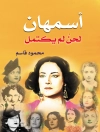In ‘Walter Sickert: A Conversation, ‘ Virginia Woolf delves into the life and artistic philosophy of the controversial British painter Walter Sickert. Through a series of imagined dialogues, Woolf presents Sickert’s insights on art, society, and the human experience, weaving a narrative that reflects her signature stream-of-consciousness style. The prose is evocative and expressive, capturing not only the essence of Sickert’s subjectivity but also Woolf’s modernist concerns regarding the interplay of art and reality. Her exploration of Sickert’s complex character offers a unique depth, situating the work in the broader context of 20th-century artistic and feminist discourse, as Woolf both critiques and highlights the struggles of modern artists in a rapidly changing cultural landscape. Virginia Woolf, an iconic figure in modernist literature and a pioneering feminist thinker, often grappled with themes of identity, perception, and the role of women in society, which undoubtedly influenced her portrayal of Sickert. Her relationships with contemporary artists and her own innovative narrative techniques reflect a deep engagement with the artistic struggles of her time. Woolf’s personal experiences and her immersion in artistic circles further enrich her commentary on Sickert’s work, imbuing it with an urgency that transcends mere biographical exploration. I highly recommend ‘Walter Sickert: A Conversation’ to readers interested in modernist literature, as it provides valuable insights into the intersection of art and feminist thought. Woolf’s exploration of Sickert not only enhances our understanding of his complexities but also encourages reflection on the nature of creativity itself. This text serves as a profound example of how dialogue can illuminate the relationship between an artist’s life and the broader cultural currents of their era.
Circa l’autore
Virginia Woolf, born Adeline Virginia Stephen on January 25, 1882, in London, was an iconic figure of modernist literature in the early 20th century. Her literary prowess extended across essays, novels, and biographies, with an innovative approach characterized by her stream-of-consciousness technique. Woolf’s upbringing in a literary household, with her father, Leslie Stephen, being an eminent historian and author, greatly influenced her literary career. She became a central figure in the Bloomsbury Group, a circle of intellectuals and artists in England. Woolf’s works, such as ‘Mrs. Dalloway’ (1925), ‘To the Lighthouse’ (1927), and ‘Orlando’ (1928), showcase her profound insights into the human psyche, the subjectivity of experience, and the fluidity of time. In addition to her fictional work, Woolf contributed to critical essays and biographical writings, as evidenced by ‘Walter Sickert: A Conversation’ (1934), which expounds on the life and art of the British painter Walter Sickert, affirming her role as a discerning art critic. Woolf’s influence has persisted over the years, inspiring countless writers and feminists due to her exploration of women’s rights and mental illness. Tragically, Virginia Woolf’s own battle with mental health issues led to her suicide on March 28, 1941, yet her legacy endures through her significant and evocative contributions to literature and feminist discourse.












